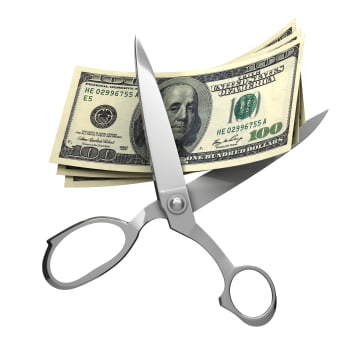Are FHA loans’ low down payment requirements benefitting the housing market?
- Yes (74%, 29 Votes)
- No (26%, 10 Votes)
Total Voters: 39
This article evaluates the FHA’s Streamline Refinance Program, and the impact its reduced mortgage insurance premiums will have on California homeowners.
In a recent effort to increase consumer spending, the Federal Housing Administration (FHA) has announced mortgage insurance premiums (MIP) will be cut on their Streamline Refinance Program. These hopeful reductions will decrease FHA-insured mortgage payments for homeowners who want to refinance and take advantage of lower loan payments at current interest rates, beginning June 11, 2012.
To encourage this refinancing and increase disposable income, the FHA is lowering its up-front mortgage insurance premium (UFMIP) to 0.01% from their current 1% rate. Annual MIPs under the program are 0.55% for qualifying FHA borrowers, discounted to the old MIP rate from the FHA’s current 1.15% rate.
Qualifications
For a homeowner to qualify for a streamline FHA-insured mortgage and receive the reduced MIP rates:
- the homeowner must be current on their existing FHA-insured mortgage; and
- the homeowner’s existing FHA-insured mortgage must have been applied for on or before May 31, 2009.
To find out if they qualify, homeowners must contact their existing lender. There are no loan-to-value (LTV) limits for this program, and no appraisal requirements.
Significance in California
Nationally, the FHA claims these MIP rate reductions may help more than three million U.S. homeowners who pay an annual interest rate higher than 5% on their existing FHA-insured mortgages. California’s share is a little over 7% of this national number.
Average savings for refinancing homeowners is estimated to be $3,000 a year, money they will hopefully spend to help get the economy rolling so that private businesses begin to pick up the slack.
Related articles:
Prior to May 2009 a measly 4% of all California homeowners received mortgages insured by the FHA. At that time, the annual MIP was at 0.5% (or 0.55%, depending on the loan), meaning these new reductions are essentially a return to MIP rates prior to May 2009 rate adjustments.
Further, the FHA is allowing homeowners who qualify to refinance with an UFMIP of almost nothing – in the range of $10-$50. Essentially the FHA is treating these refinances like loan modifications. No word on the amounts of fees the lenders will extract on the refinancing.
How much are we talking, here?
An example:
A homeowner takes out an FHA-insured mortgage before May 2009. He is a first-time homebuyer, and the loan is a low-tier amount of $200,000. Fast forward to 2012: the home is now worth $100,000.
His interest rate is 6%, making his monthly payment of principal and interest (PI) $1,200. He is current on his payments and applies through his lender for FHA-insured refinancing at the current 4% mortgage interest rate.
On the FHA refinance, he will pay $20 up-front for the UFMIP charge. The refinancing lowers his monthly PI payment to $955, saving him $2,900 a year in PI payments. His annual MIP and PI impounds will remain the same with the refinance.
Great, but the impact on California homeowners will be minimal. In fact, it is nearly meaningless, as this government program does not apply to any other government guarantee programs covering the majority of mortgages in California.
However, if lenders on all types of home mortgages made this refi program available to their borrowers, California’s economy would swell dramatically with the difference – roughly $9 billion would be injected into consumer goods and savings (for investment by others) in a single year. The boosted economy would have a multiplier effect producing impressive job recovery numbers, and in turn increase home sales. Agents would again be earning a living — and so on. (Strategic defaults produce a similar economic result with an even greater number of home sales, albeit REOs.)
Reality check
Don’t expect to see any lenders other than those with FHA-insured loans following suit – the majority of California loans are made through Fannie Mae and Freddie Mac (collectively, Frannie), while FHA loans are owned primarily by Ginnie Mae, a different, nearly trouble-free government sponsored entity.
Ginnie doesn’t have the same problem helping homeowners refinance that Frannie has. Freddie was discovered to have bet against homeowners refinancing through risky inverse floater deals earlier this year. That action discourages them from refinancing the loans they hold.
Related articles:
Sadly, these FHA reductions will only make the slightest of contributions to the state economy. Thus, while the FHA is congratulating itself for potentially helping “millions,” we are skeptical as this has all the appearance of HAMP fever.
Worse, these MIP reductions are almost as beneficial as the $18 billion the attorney general has secured for California’s legends of negative equity and foreclosed out homeowners. We’ll believe it when we see it.
Related article:
Department of Housing and Urban Development: FHA announces price cuts to encourage streamline refinancing














